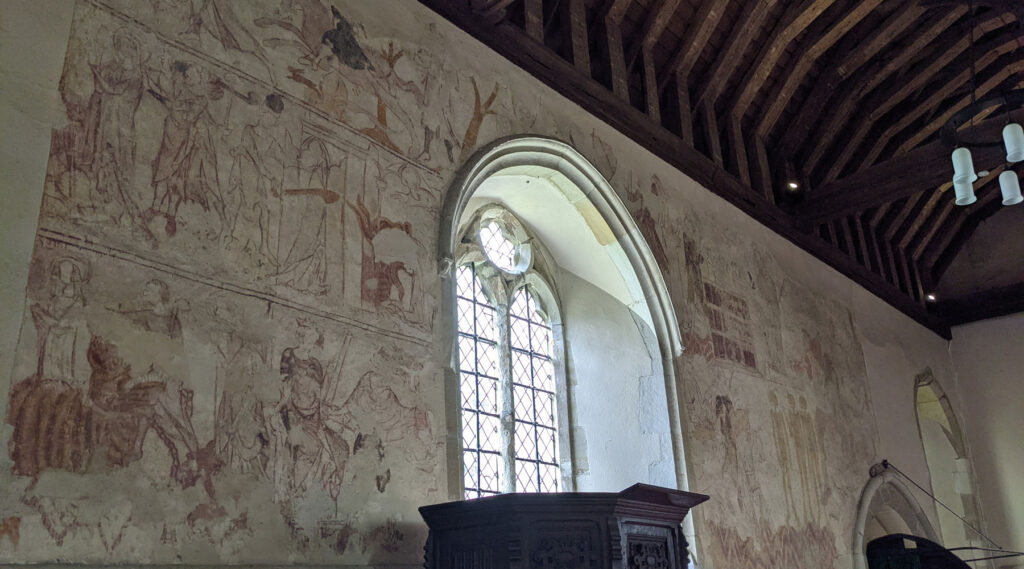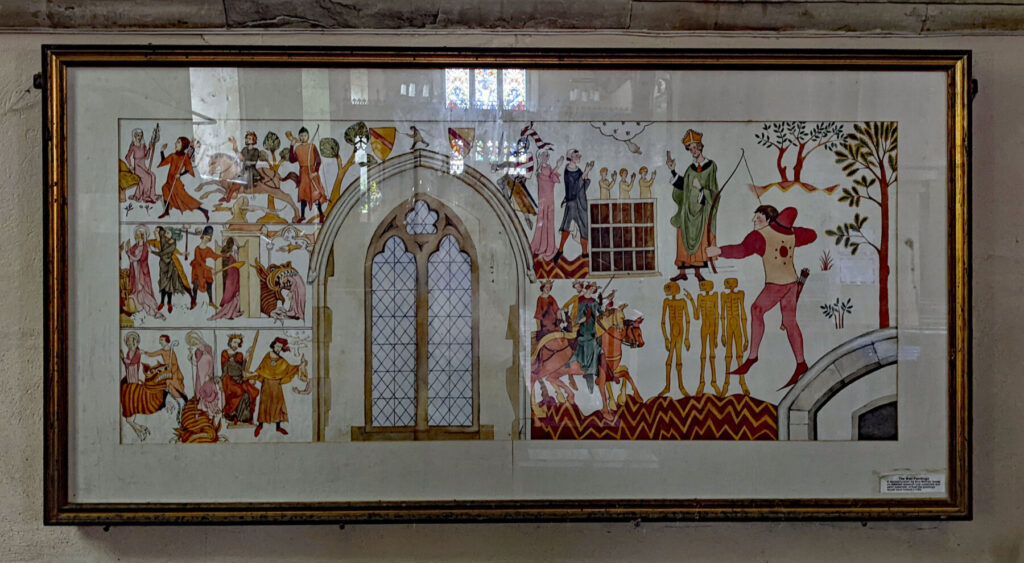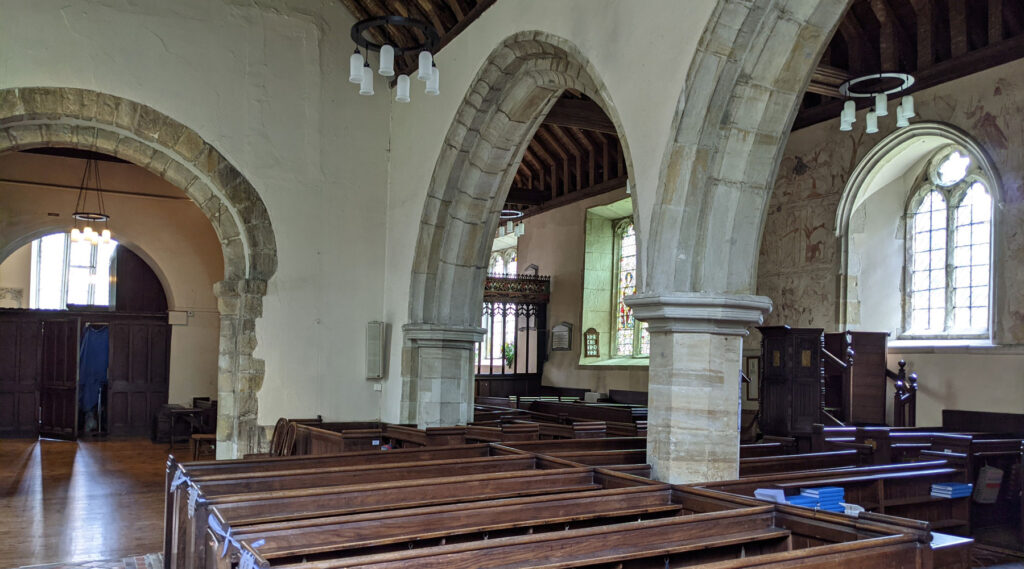A church near Gatwick Airport contains a remarkable survivor inside — a set of historically significant series of murals that date to around 1300-1350.
The church was originally constructed on this site around 1080, not long after the Norman Conquest, as a single nave with tower above, but a couple of centuries later the second nave was added beside it, giving the church internally the appearance of two churches joined in the middle.
As with all churches of the time, it would have been richly decorated inside with murals, but during the puritan times, most churches were whitewashed to conceal such Papist decoration, and even today we expect churches to be fairly plainly decorated inside.
This whitewashed church was restored in the 1860s under the guidance of the art-architect, William Burges and it was the vicar, the Rev T Burningham who discovered the murals under the paint and carefully exposed them once more and Burges who assisted in restoring them. Although much faded from when first painted, the design is still remarkably easy to make out, and there’s a helpful reproduction image on a side wall by the art historian Ann Worrall.
The murals tell three tales – of St Margaret who was swallowed by the devil in the shape of a dragon; of St Nicholas (patron saint of the church) rescuing three boys; and of three princes meeting three skeletons. A bit of a later painting can be seen to the side, of which just the archer survives.
Although most of the paintings date from 1300-1350, research is suggestive that they are by different artists who would have been travelling tradesmen. Traces of vertical and horizontal lines in the then wet plaster can still be seen and were used to lay out the design, which was sketched out then painted in.
It’s a sort of painting by numbers, on a very large and medieval scale.
There’s a useful document by the door which explains the meaning of the murals and what’s interesting to note about them. Only read the small sign by the murals if interested in how many things they didn’t know in the 19th century when that explanation was placed there.
Also worth looking for is the stone piscina behind the pulpit, which is used for washing the communion cups and marks the site of an old altar. The pulpit is Tudor, and the rood screen is richly painted, even today.
One of the richer supporters of the church during Tudor times was Sir Thomas Saunders who must have been very clever to remain in high political office during the reigns of King Henry VIII, the devote protestant King Edward VI, the equally devout Catholic Queen Mary, and back to Protestantism under Queen Elizabeth.
During his time in Charlwood, he took over the Chantry chapel as the family’s private pew. All are equal before God, except in Church where the rich are still given preferential treatment. During the civil war there were suspicions that the Saunders family descendants weren’t entirely supportive of Parliament, and the local landowners, the Jordan’s petitioned Parliament for the right to take over the private pew for themselves.
The church managed to evade the Victorian tendency for rebuilding, so what we see today is largely original from when the church was built, baring some modest changes to the pulpit and a new organ installed where an 18th-century gallery had stood.
The church is currently open daily from 9am-4pm, but do note that it’s a working church so check for weddings and services if making a special trip, maybe to also visit the nearby aviation museum. My visit coincided with the flowers being laid out for a wedding.













